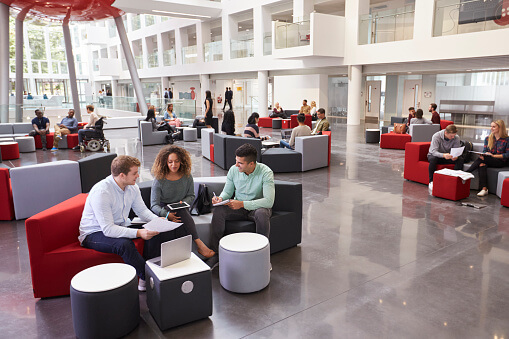By Larry Alton
Our workplaces are constantly evolving, with new technologies and new trends making our work lives easier and more effective. The desk, still a staple in most offices, has changed as well, and if you want your office to help workers achieve their full potential, you’ll want to ensure your desks fit in with the modern era.
So what does the modern era mean for our desks?
Features of the Modern Office Desk
If you want your desks to better serve your employees and keep up with the corporate zeitgeist, you’ll need to ensure they bear the following features:
- Death of the desk phone. As Dialpad notes, the traditional office desk phone is becoming less and less necessary, with less than 17 percent of workers claiming a desk phone is necessary to do their jobs. With the prominence of smartphones and other sophisticated devices, the limited utility of the desk phone is not only obsolete, it’s cumbersome—it takes up valuable space and serves a redundant role. Plus, most young professionals prefer emails and IMs to phone calls.
- Digitization of office staples. Traditional desk accessories are starting to disappear as they become digitized and available in the form of convenient tablet and smartphone apps. For example, who needs a calendar hanging on their desk when Google Calendar is far more efficient, with automated reminders and stackable events? Who needs a pad of paper when Evernote helps you take notes more intelligently and with automatic, intuitive organization? Who needs a stapler when your office has gone almost entirely paperless? These disappearing office items lead to desks with bigger open spaces and far less clutter.
- BYOD accommodations. According to IBM, employees can save 45-60 minutes every week by using their own devices for work, which is why so many businesses have adopted a “bring-your-own-device” (BYOD) policy that allows workers to use their personal smartphones, tablets, and other mobile devices for work. Modern desks have built-in accommodations for these, in part thanks to the newly opened space from the reduction of other office staples. Still, many desks now feature tablet stands, more outlets for charging devices, and other features that make it easy to use mobile devices.
- Personal computer evolution. Personal computers at the office are starting to decline in popularity. Though they’re still highly important for some roles and some organizations, they’re quickly being replaced by modern mobile devices. Those that aren’t being replaced are becoming smaller and less invasive, allowing more open possibilities for modern desks.
- Openness to collaboration. Early office designs prioritized the segmentation of workers via desks and surrounding structures. Cubicles, offices and other types of walls prevented workers from getting distracted or interrupted by others. In theory, this was a good way to boost productivity, but more forward-thinking businesses are doing away with those walls to encourage more communication and collaboration. They view team collaboration as an essential feature of a productive office, encouraging their employees to work together on common problems rather than isolating themselves in physical space.
The Role of Culture
The above qualities are noteworthy features of modern desks, but that doesn’t mean they’re the only “correct” vision of what a desk should include. There are advantages to adhering to the trends of the era, including capitalizing on productivity breakthroughs and attracting better talent, but you also need to keep your company’s culture in mind. Some companies pride themselves on a traditional image, or prioritize individual efforts over group collaboration—these aren’t wrong, and shouldn’t be changed just to accommodate a new trend.
How you set up your employees has a massive bearing on productivity, morale, and even the image of your brand. While not a requirement and not the only path toward these benefits, modern office desks are one route to securing them.
Larry Alton is an independent business consultant specializing in social media trends, business, and entrepreneurship. Follow him on Twitter and LinkedIn.







